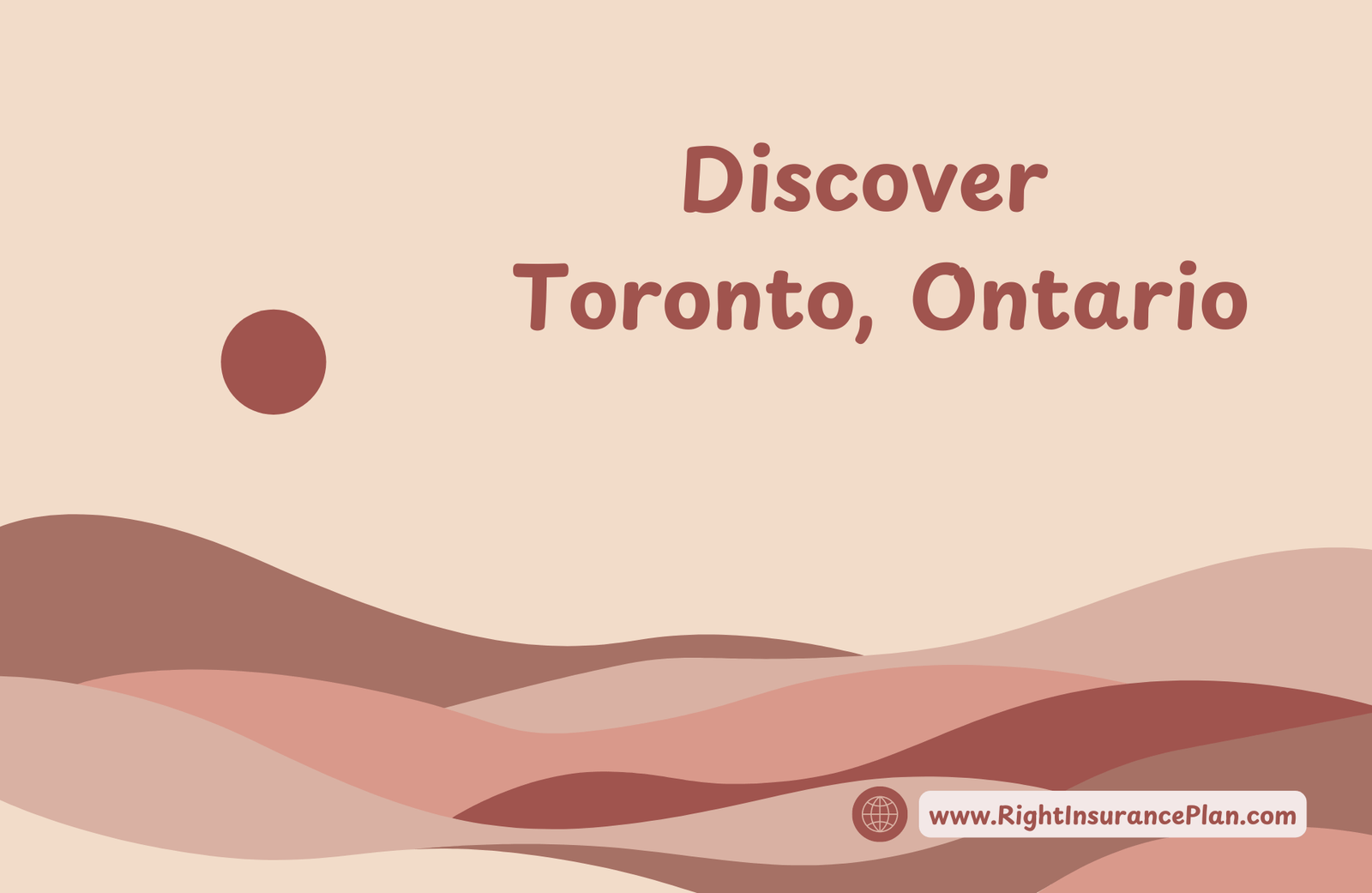
Discover Toronto, Ontario
Toronto, Ontario, is one of the most diverse and exciting cities in the world. No matter what kind of traveler you are, the city offers something unique. Its impressive skyline, multicultural neighbourhoods, world-class attractions, and vibrant arts scene make it a destination worth exploring.
Whether you're visiting for business, leisure, or a family vacation, Toronto guarantees an unforgettable experience filled with endless discovery.
Toronto is Canada's largest city and a major center for business, arts, technology, and entertainment. Located on the northwestern shore of Lake Ontario, it blends modern urban life with cultural richness and natural beauty. From the famous CN Tower to peaceful parks, historic districts, and bustling food markets, Toronto truly has it all.
What Makes Toronto Worth Exploring
Toronto stands out because of its diversity, welcoming atmosphere, and wide range of attractions. More than 200 ethnic groups live here, making it one of the most multicultural cities on the planet. This mix of cultures is reflected in the food, festivals, neighbourhoods, and overall lifestyle.
Why Toronto is Special
-
A rich mix of global traditions, cuisines, and communities
-
One of the safest and friendliest big cities in the world
-
Plenty of activities and attractions for everyone
-
Stunning waterfront views and relaxing parks
-
Excellent public transit, including TTC buses, subways, and streetcars
Top Attractions in Toronto
1. CN Tower
The CN Tower is Toronto’s most iconic landmark, rising over 553 meters high. Visitors can enjoy breathtaking views, dine at the revolving 360 Restaurant, or experience the thrilling EdgeWalk.
-
Amazing panoramic views
-
Popular for photography
-
Perfect for first-time visitors
2. Royal Ontario Museum (ROM)
The ROM is Canada’s largest museum and features exhibits on natural history, world cultures, art, and archaeology. Its unique architecture and wide range of galleries make it both educational and inspiring.
-
Over a million artifacts
-
Great for history and art lovers
3. Ripley’s Aquarium of Canada
Located beside the CN Tower, Ripley’s Aquarium offers underwater tunnels, shark exhibits, interactive touch pools, and thousands of marine species. It is especially enjoyable for families.
-
Fun and educational
-
Turtle, shark, and jellyfish exhibits
4. Toronto Islands
Just a short ferry ride away, the Toronto Islands offer beaches, bike rentals, picnic spots, and stunning skyline views. It’s a peaceful escape from the busy downtown.
-
Best for nature lovers
-
Ideal for picnics and photography
5. Art Gallery of Ontario (AGO)
The AGO houses more than 90,000 artworks, including pieces from Europe, Canada, and Indigenous artists. Visitors can easily spend hours exploring its fascinating exhibits.
-
Diverse art collections
-
Great for students and art enthusiasts
6. Casa Loma
Casa Loma is Toronto’s very own castle, complete with secret passages, towers, antique rooms, and beautiful gardens. It showcases early 20th-century luxury.
-
Historical landmark
-
Beautiful architecture for photos
7. St. Lawrence Market
St. Lawrence Market is one of the best food markets in the world. It features fresh produce, unique food vendors, handmade goods, and delicious local dishes.
-
Perfect for food lovers
-
Famous for peameal bacon sandwiches
Popular Neighbourhoods in Toronto
Toronto is divided into lively neighbourhoods, each offering a different experience.
Downtown Core
The heart of business and tourism, full of restaurants, shops, and major attractions.
Kensington Market
A colourful, bohemian neighbourhood known for vintage shops, international food, and street art.
Chinatown
One of North America’s largest Chinatowns, offering authentic restaurants, markets, and specialty stores.
Distillery District
A historic area with Victorian buildings, art galleries, boutiques, and seasonal events like the Christmas Market.
Yorkville
An upscale area with luxury shopping, high-end dining, and elegant hotels.
The Beaches
A relaxed waterfront community perfect for swimming, walking, and dining by the shore.
Things to Do in Toronto
No matter your interests, Toronto has something exciting to offer.
Outdoor Adventures
-
Walk along the Harbourfront
-
Enjoy a picnic in High Park
-
Hike or bike on Don Valley trails
Family-Friendly Activities
-
Visit the Toronto Zoo
-
Explore the Ontario Science Centre
-
Have fun at Centreville Amusement Park
Shopping
-
Eaton Centre for popular brands
-
Queen Street West for trendy fashion
-
Yorkdale Mall for luxury shopping
Cultural Experiences
-
Attend TIFF (Toronto International Film Festival)
-
Watch live theatre in the Entertainment District
-
Learn Indigenous history at cultural centres and museums
Best Time to Visit Toronto
Toronto offers activities year-round, making any season a great time to visit.
Spring (April–June)
-
Warm weather
-
Blooming gardens
-
Outdoor festivals
Summer (June–September)
-
Perfect for outdoor activities
-
Island trips and patio dining
-
Major events and concerts
Fall (September–November)
-
Beautiful fall colours
-
Cooler temperatures
-
Smaller crowds
Winter (December–March)
-
Holiday markets
-
Skating rinks
-
Winter festivals
Helpful Travel Tips
Make Your Trip Easier
-
Use the TTC for easy and affordable travel
-
Buy a day pass for unlimited transit rides
-
Stay in downtown to reduce travel time
-
Try Toronto foods like poutine, butter tarts, and multicultural dishes
-
Explore on foot many attractions are walkable
Conclusion
Toronto, Ontario, is a city full of energy, culture, and beauty. With its diverse neighbourhoods, exciting attractions, welcoming atmosphere, and scenic waterfront, it is one of Canada’s top cities to explore. Whether you love food, art, shopping, history, or nature, Toronto has something special waiting for you.



